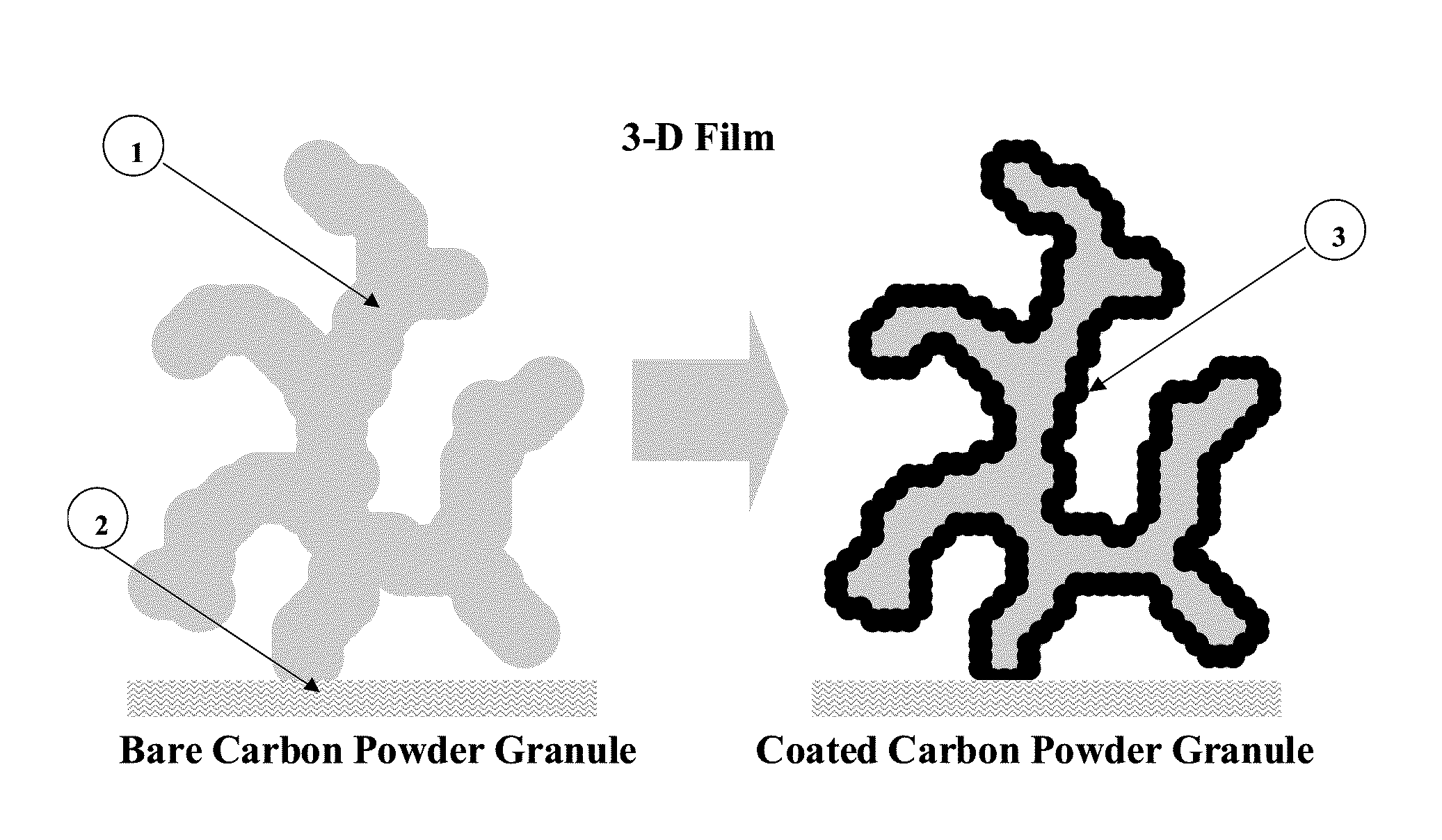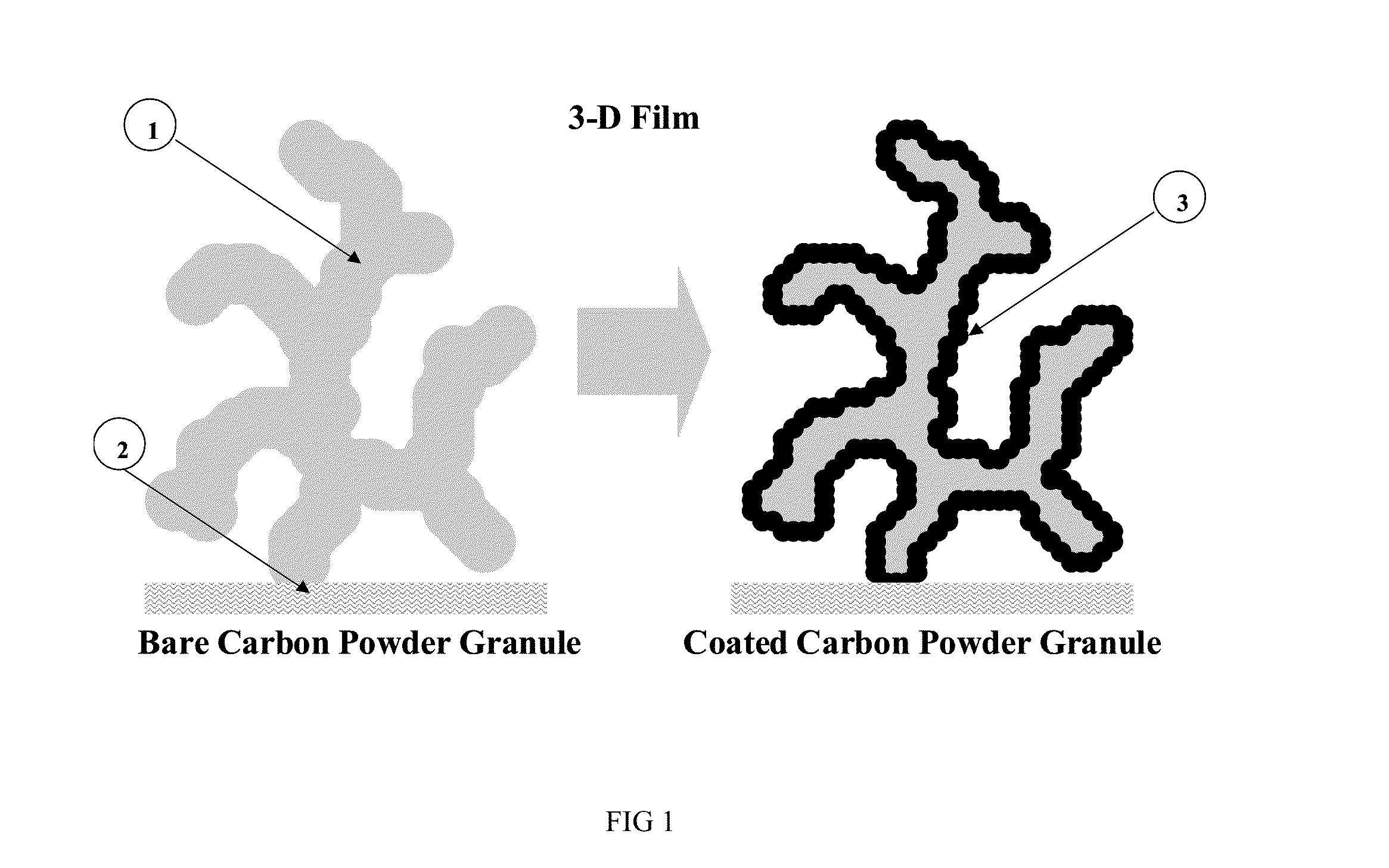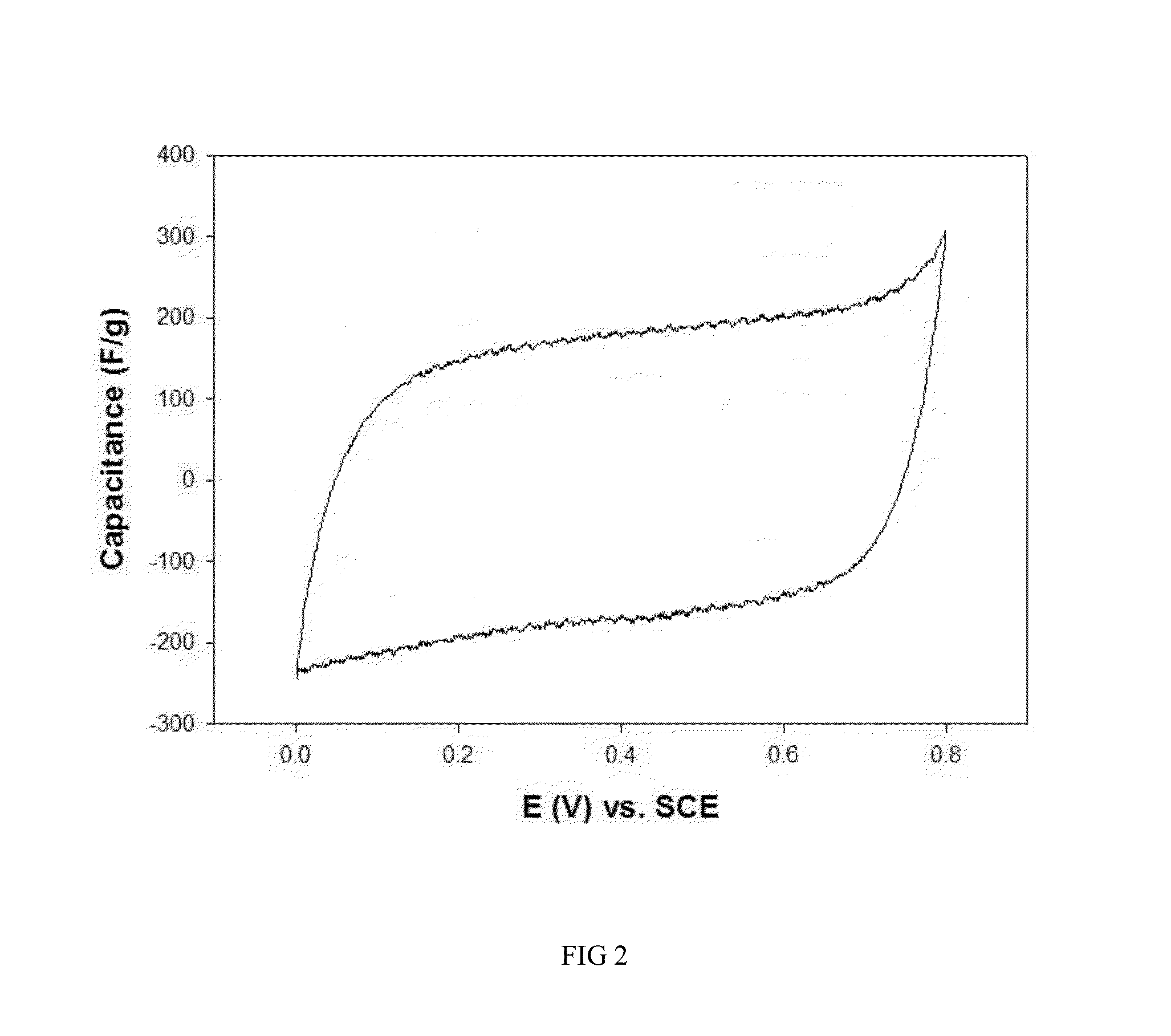Functionalized Carbon Electrode, Related Material, Process for Production, and Use Thereof
a carbon electrode and functional technology, applied in the manufacturing process of electrodes, cell components, impregnation manufacturing, etc., can solve the problems of increasing materials cost, limiting available storage capacity, increasing cost, etc., and achieves simple synthesis processing and low cost of raw materials.
- Summary
- Abstract
- Description
- Claims
- Application Information
AI Technical Summary
Benefits of technology
Problems solved by technology
Method used
Image
Examples
example i
[0067]Fabrication of functionalized porous carbon electrode material; birnessite manganese / nickel oxide film on carbon nanofoam.
[0068]An electrode material as illustrated in FIG. 1 and FIG. 3 was formed by immersing a carbon structure for a controlled period of time in a solution comprising permanganate and nickel salts in a controlled ratio dissolved in ultra-pure water / pH buffer at a controlled pH and temperature. The manganese and nickel from the aqueous permanganate / nickel precursor solution are reduced on the surface of the carbon and co-deposited upon the carbon forming an insoluble oxide film.
[0069]Carbon aerogel was purchased from a commercial source (Marketech International Inc.) with an approximate thickness of 170 micrometers. Carbon aerogel paper was cut into pieces of approximately 1 centimeter by 1 centimeter and then soaked and vacuum saturated in purified water.
[0070]In this exemplary embodiment, the aqueous metal salt precursor solution comprised manganese / nickel mi...
example ii
Characterization of electrode material; manganese / nickel oxide film on carbon aerogel
[0073]FIG. 2 shows cyclic voltammetry data of a 4:1 manganese / nickel oxide material with capacitance of approximately 180 F / g in 1M LiCl electrolyte.
example iii
[0074]Fabrication of functionalized porous carbon electrode material; nanoscale oxide film comprising spinel manganese doped with nickel on carbon aerogel.
[0075]An electrode material is formed as in EXAMPLE I, using a precursor ratio of about 0.99:0.01 manganese:nickel.
[0076]Prior to drying, counter ions are exchanged for lithium ions by immersion of the formed electrode in an aqueous solution bearing lithium ions such as lithium nitrate, lithium sulfate or lithium hydroxide, for example. In this exemplary embodiment, lithium nitrate was used. Such immersion is carried out first under vacuum equilibration, then at room temperature or elevated temperature or under microwave heating, for example. In this exemplary embodiment, about 30° C. for about 2-4 hours was used.
[0077]The material was subsequently heated to about 300-350° C. under nitrogen atmosphere for about 1-2 hours, followed by heating at about 200-220° C. in air for about 3-6 hours.
PUM
| Property | Measurement | Unit |
|---|---|---|
| particle size | aaaaa | aaaaa |
| particle size | aaaaa | aaaaa |
| specific surface area | aaaaa | aaaaa |
Abstract
Description
Claims
Application Information
 Login to View More
Login to View More - R&D
- Intellectual Property
- Life Sciences
- Materials
- Tech Scout
- Unparalleled Data Quality
- Higher Quality Content
- 60% Fewer Hallucinations
Browse by: Latest US Patents, China's latest patents, Technical Efficacy Thesaurus, Application Domain, Technology Topic, Popular Technical Reports.
© 2025 PatSnap. All rights reserved.Legal|Privacy policy|Modern Slavery Act Transparency Statement|Sitemap|About US| Contact US: help@patsnap.com



